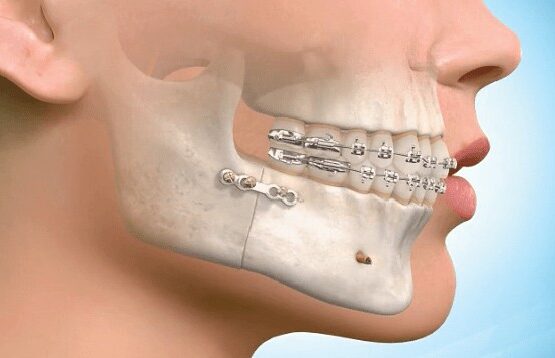Surgical Orthodontics
Sometimes, a patient’s bite cannot be corrected with orthodontics alone and movement of the jaws, not just the teeth, is required. In that situation, a patient may be a candidate for surgical orthodontics in addition to orthodontic braces. Orthodontic treatment is done before and after surgery so that upper and lower teeth meet appropriately, and the individual is able to more effectively bite, chew, and speak.

Who Needs Surgical Orthodontics?
Surgical orthodontics may be necessary for someone whose upper and lower jaws, which hold the teeth, are out of position. Consequently, the upper and lower teeth don’t fit, impairing the ability to bite, chew or speak. Your orthodontist will work in conjunction with an oral and maxillofacial surgeon to position your jaws and teeth for optimal function.
Unlike children, adults are no longer growing, so the only way to modify the size or shape of an adult’s jaw bones is through surgery.
Sometimes the root cause is genetic – as you were growing, your upper and lower jaws grew out of proportion to each other, and that can keep upper and lower teeth from meeting as they should, making it hard to bite, chew or speak. Other causes can be linked to birth defects or injuries to the jaw or environmental causes.
What Causes the Need for Surgery?
Sometimes the root cause is genetic – as you were growing, your upper and lower jaws grew out of proportion to each other, and that can keep upper and lower teeth from meeting as they should, making it hard to bite, chew or speak. Other causes can be linked to birth defects or injuries to the jaw or environmental causes.







